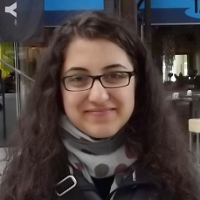
SENA KAYASÜ (ARCH/II)
sena.kayasu@ug.bilkent.edu.tr
Although bearing a resemblance to the subject of my previous piece, the title for this week is actually a line from Pixar’s “Up.” Lovely movie. It also proves that whoever said animated movies can’t bring tears to your eyes was utterly mistaken. Walt Disney started them off about 74 years ago, but these films have really grown in sophistication in the past decade. They are no longer limited to being educational entertainment for children, although this is a great cause in and of itself. They range far and wide in terms of genre, especially with the Japanese focus on anime, and appeal to a great variety of age groups. They are becoming more realistic, more emotional, and are accepted more and more as a legitimate field of artistic expression.
The Disney studios made animations universal. Most of us can probably say that our childhoods were ruled by their movies, from “The Little Mermaid” to “Beauty and the Beast,” from “Tarzan” to “Hercules.” This was the Disney Renaissance, a resurgence of the company after its decline in the decades following the death of the original founding brothers, Roy and Walt Disney. Disney’s association with the computer company Pixar allowed their recovery to grow even further, until the companies had a falling out in the late 90s and early 2000s. Recently, they have made up again. It’s a complicated relationship. And yes, Pixar was originally a computer company that produced only a few short films to promote their products in the 80s. That didn’t work, though; Pixar didn’t take off until it collaborated with Disney to produce their movies. Thanks to Steve Jobs, the company stayed afloat long enough for this to happen.
What I believe has been one of Pixar’s most important contributions to the field, apart from their amazing graphics of course, is their stories. Most of Disney’s stories have been based on fairy tales, historical characters or myths. Even the new “Princess and the Frog” and “Tangled” are loosely based on well-known story lines. Not that I’m against fairy tales—not at all. They are, in fact, super. As G. K. Chesterton put it, “Fairy tales aren’t true, they’re more than true; and they’re not true because they tell us that dragons exist, since all children know in their hearts that dragons exist. They’re true because they tell us that dragons can be beaten.” This happens to be one of my favorite quotes. But Pixar does not only base animations on existing fairy tales: it creates new ones (as defined by the above quote). The company has produced only 14 movies so far, but all of them are refreshingly original, even the ones that were created in collaboration with Disney. “Toy Story,” “Monsters Inc.,” “The Incredibles” and “Ratatouille” fit this description (correct me if I’m wrong) and are amazing, but “Wall-E,” “Up,” and “Brave” are simply groundbreaking. An emotionally starved robot cleaning up the world after humans have trashed and abandoned it? Come on! That’s amazing, and it’s laced with great messages, not only for kids, but for everyone who’s watching, introducing the issue of environmental preservation to the world of animation. “Up” is one of the most mature growing up stories you’ll ever come across, especially in terms of exactly how “mature” its protagonist Carl is. Last but not least on my list, “Brave” may seem like a more traditional coming-of-age story about a girl announcing her freedom, but it still feels so different from all that we’ve seen before. (Not to mention the number of little girls it’s caused to flock to archery ranges.)
I don’t know if you’re aware of it, but some of Pixar’s most creative works are not their feature films, but their short ones. Also known as “The Shorts,” some of these are spin-offs from the features, while others stand on their own. They are hilarious and cute and thought inducing. They also pay tribute to the field where computer-animated graphics are strongest, since not everyone has the capability of making a feature. In fact, very few companies do. Others, as well as individuals, shine with their short films. These aren’t necessarily optimistic, as Disney and Pixar’s generally are. They reflect the wide variety of expression possible through animation.
This also includes the range of characters. Animated characters can be human; but just as often, they’re not. As such, they can show us what humans alone never could, like the life of a squirrel underground, or a robot up in the sky, or the emotions in the human brain. The latter is, I hear, Pixar’s upcoming project.
Animations open up a new world of possibilities that can be explored and exploited, and I have the feeling they’re only just starting to do so. With them, and with CGI incorporated into “real” movies, we can look toward the sky, like our friend Wall-E. Animated films attract more artists and actors every day, with well-known theater actors giving voice to impossible characters. These movies create new tales and legends, and as Merida’s mother (voiced by the marvelous Emma Thompson) so wisely tells us, “Legends are lessons; they ring with truths.” Like every technological advance—and more so than a mobile phone, in my opinion—animated films will lead us to new truths, and new horizons.
